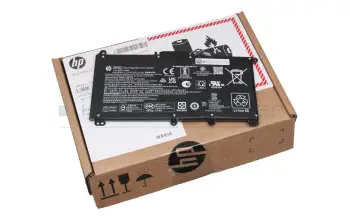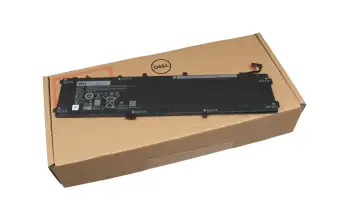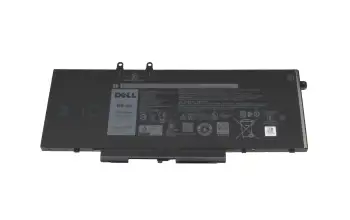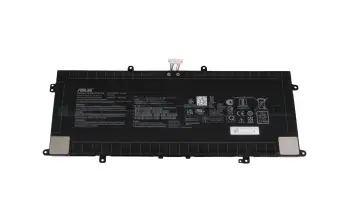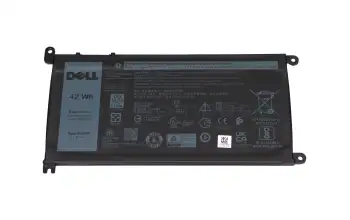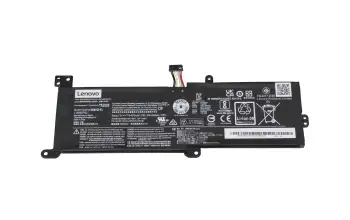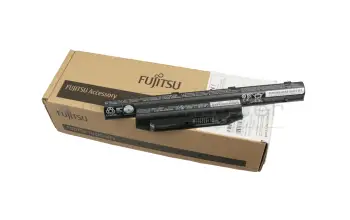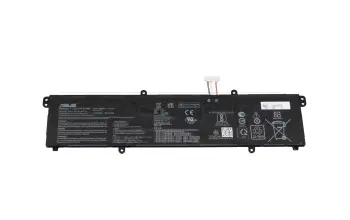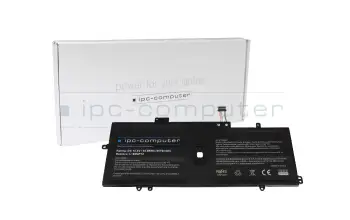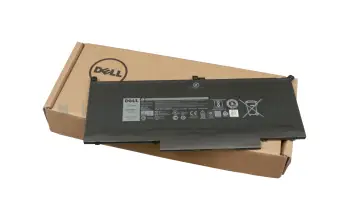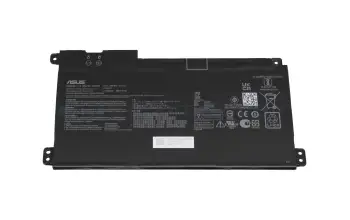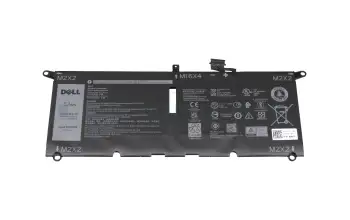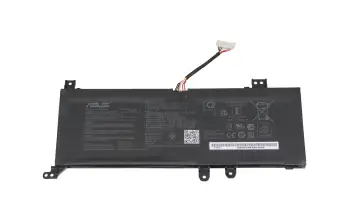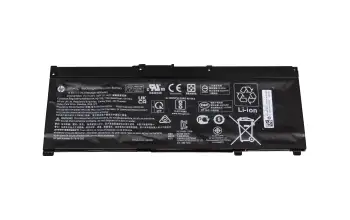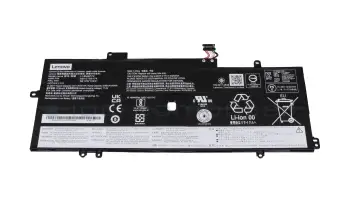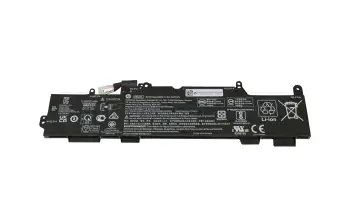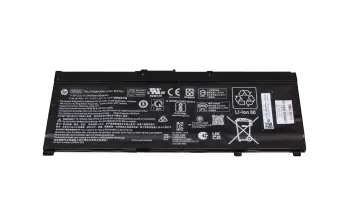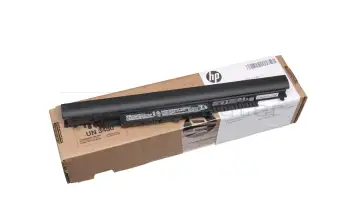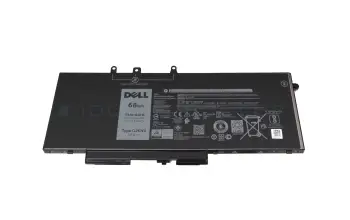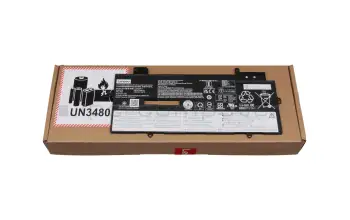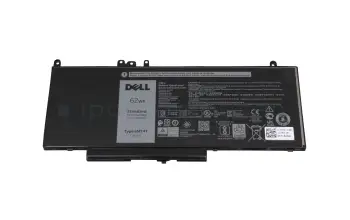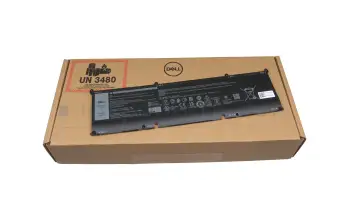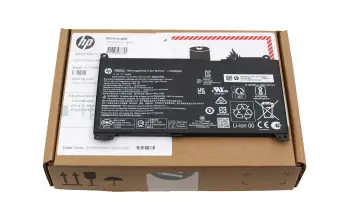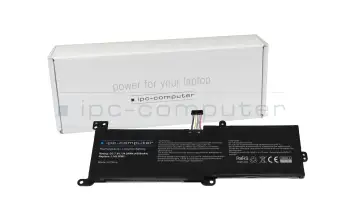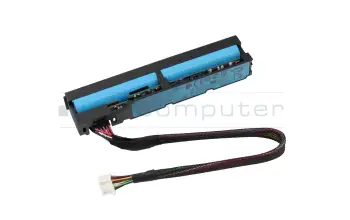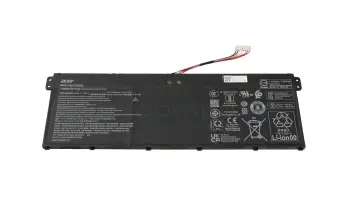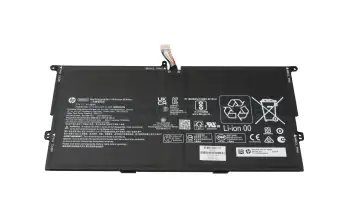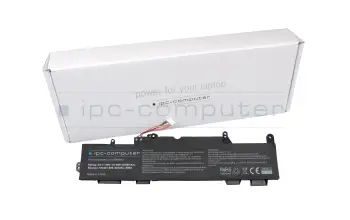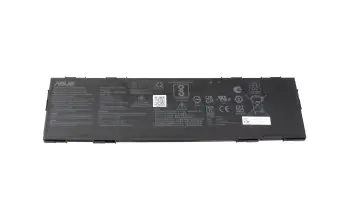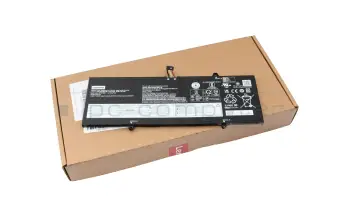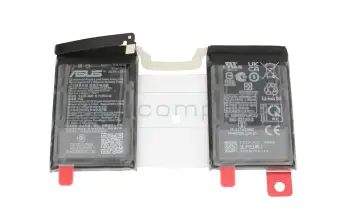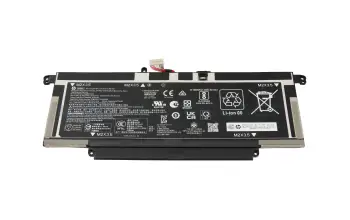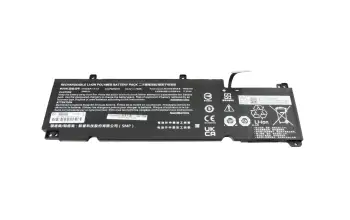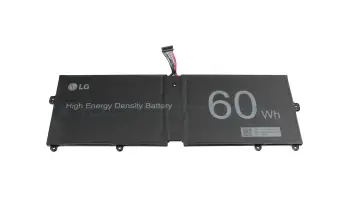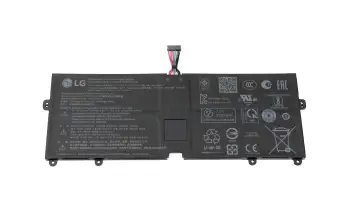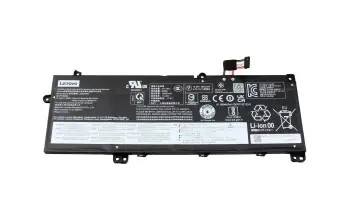Laptop batteries
Thousands of different batteries immediately available from stock
- Only high-quality original batteries - directly from the manufacturers Acer, Asus, Dell, Fujitsu, HP, Lenovo, etc.
- Best prices for you by direct and bulk purchase
- Our claim: We can deliver any laptop battery.
- Original battery no longer available? IPC Replacement batteries are then the ideal solution.
- Ordered until 14 o'clock - dispatch on the same working day
- Do you want to have the defective battery replaced by a professional technician? Click here to go directly to the repair service.

Find the right battery by model or features
How do I recognize a defective battery?
If you like to use your laptop on the road, you need a powerful battery. Laptop batteries are wearing parts and usually need to be replaced once per laptop usage period. But when buying a laptop battery, there are many things to consider so that you can really expect success and preferably a long laptop battery life. The battery life depends on several factors like the hardware equipment, the user behavior and the environmental conditions.
Dangers with defective batteries
When the battery is defective, the first thing you notice is that the performance of the battery has become severely limited. The battery runs down much faster than it originally did when you bought it. If it still works, it generates a current that does not sufficiently cover the laptop's energy needs. The battery voltage is constantly too low. If the battery is broken, you should not recharge it either, because it can be dangerous. Lithium batteries indeed pose a certain fire risk due to the technology. However, modern laptop batteries have some protection mechanisms that prevent exactly that. Damaged polymer batteries are characterized by the fact that they inflate and should always be disposed of professionally at an early stage.
Revive deeply discharged batteries?
A deeply discharged battery must be disposed of immediately, because in this case the battery can definitely no longer be reactivated. But you can only speak of a real deep discharge when the battery voltage is only approx. 5 - 7 volts or less. If, however, the battery voltage is still somewhere between the actually required nominal voltage and the state of true deep discharge, then there is justifiably still hope.
Laptop battery FAQ
Here you can find all important questions and answers surrounding laptop batteries
- Battery diagnostic tools
Our technicians use the following diagnostic software for the assessment of batteries. They allow for the assessment of batteries that have been stored away for a long time. The results for batteries, that have been stored correctly: fully charged, in a dry place and not connected, can be quit surprising. Oftentimes they suffered no loss of quality. With the Tool BatteryMon you can, among other things, see how quickly your battery is being charged and how long this charge will last:
- Do I need a new ac adapter after installing a new battery?
No, not necessarily.
- Does a new battery have its full capacity when shipped?
New batteries are usually shipped partially charged and should be fully charged before the first usage.
More information in the FAQ: "What do I have to consider with a new battery?"
See also: - How can I dispose of my old batteries?
Batteries cannot be disposed of like normal waste, because they contain substances like mercury and lead. They have to be returned at the appropriate place for example in a store or a municipal collection point.
- How do I calibrate my battery and what are the benefits?
When calibrating the battery, you first fully charge it, then fully discharge it, and finally charge it again. While discharging the battery, ensure that your notebook does not attempt to save energy as much as possible or go into sleep mode, as this will make the process of discharging the battery take a very long time. Calibrating corrects an inaccurate battery status display in Windows.
Please follow these steps on Windows 10 / 11:
- Change the power plan for discharging: Open "Edit Power Plan" via Windows Search. Under "Turn off the display," select "Never." For "Put the computer to sleep," also choose "Never" to ensure the computer continues running even when inactive. Click on "Change advanced power settings."
- Fully charge the battery: Charge the battery completely and keep the power adapter plugged in until the battery has cooled down (about 2 hours).
- Let the battery fully discharge: Disconnect the power cable and let the notebook run until it automatically shuts down according to the power plan. The notebook can be used normally during this time.
- Recharge: Plug the power cable in again and charge the battery fully. The notebook can be used normally during this process.
- Change the power plan for regular use: Restore the power settings to their previous state.
After completing the charging process, Windows will be calibrated to the available capacity. These steps ensure an accurate battery capacity display and optimize your notebook's performance. Note that the exact menu titles may vary depending on the notebook model and Windows version. If the charge indicator is still inaccurate, please continue to use the battery normally. The charge display should improve after 2-3 additional charge cycles.
- How do I reset the internal battery of my laptop?
If the battery from your laptop is causing problems, a battery reset can help.
To do this, first disconnect the AC adapter from the device and turn it off. Then you will find the "battery reset pinhole" on the back. Use a paper clip to press the hidden button for about 4 seconds. To ensure an undistorted result, leave the device without power for about 5 minutes. Now you have successfully reset the battery of your laptop.
- How do I take care of and charge my battery correctly?
- If you mainly use your laptop while it’s connected to mains, you should remove your battery and only charge it every one to two months.
- Don’t fully discharge your battery, because this can lead to a depth discharge. Charge the battery again, when between five and seven percent of charge remain.
- If possible charge your battery while the notebook is turned off. The optimal temperature for batteries is between 10 and 30°C, this range is usually exceeded in a powered-on notebook.
- If you have multiple batteries for your device, rotate between them.
- After being uncharged for a while, the battery needs about two to three complete charge cycles to reach its full capacity again.
- Avoid high temperatures for example due to direct sunlight or being left in a hot car. High temperatures increase the self-discharging rate.
- Rechargeable Lithium-Ion batteries, which are found in nearly all modern electronics, have a limit of somewhere between 500 to 1000 charge cycles. However, turning your laptop on and off while plugged in is one charge cycle. This is why we recommend removing the battery when using the device plugged in for a longer time.
- Furthermore, it would be optimal to never fully charge or discharge your battery, but rather to keep it between 20% 80% charge.
Some manufacturers integrate a battery protection function in their notebooks. This function only allows charging up to 80% capacity to prolong he lifespan of the battery.
The so-called memory-effect of a Lithium-Ion battery can be disregarded in normal use, a complete charge after a complete discharge is not needed.
On the contrary for many modern devices the opposite is true, it is best to keep the charge between 20% and 80%. This is due to the sensitivity of Lithium-Ion batteries to depth discharge and overcharge. However, in most devices control electronics prevent the user from making any grave mistakes. For example, Apple implements a function which charges the battery as fast as possible up to 80% but charging slows down a lot after that. This conserves the lifespan of the battery at the cost of charge time.
One thing that should be avoided though is leaving your device plugged in for many days in a row. The battery should be discharged once in a while to move the ions inside.
- How fast is the self discharge of a battery?
Even if the notebook is turned off, there can still be a small current flowing, leading to a depth discharge of the battery. The battery will discharge between 0.5% and 1% per day. This can lead to a premature aging of the battery and in the worst case its defect.
- How long does it take to charge a battery?
- Usually a complete charge takes between 30% and 50% longer than a complete discharge.
- Of course, the charge time depends on the capacity of the battery. A 2200mAh battery takes only half as long as a 4800mAh battery to charge.
- With a 2200mAh or 2400mAh battery this would result in about 2 to 4 hours.
- There are also high-performance batteries with up to 9000mAh of capacity, that can take up to 7 hours to charge.
Wh Power input Duration until fully charged 50 5 Watt 8 hours 50 10 Watt 6 hours 8ß 5 Watt 12 hours - How long does the charge of a battery last?
This is a question, that is hard to answer, because it depends on a lot of different factors such as CPU, Display, GPU. Usually a 15.6" notebook consumes about 20W when using the battery. A 17" unit can also use a bit more.
With these 20W a 60Wh battery would last for 3 hours. t = W/P = 60Wh/20W
The energy stored in the battery can be calculated as follows:
W = U * i* t for a 6-cell battery with 4400 mAh this would be 11.1V * 4.4Ah = 48,4 Wh
With the 20W of power consumption this battery would last about 2.5 hours.
If you wish to conserve battery life, the following tips might help you:
- Use the energy saving function in Windows found in the system controls und the power options
- Reduce the brightness of your screen since it consumes most of the power in a laptop.
- Turn off Wi-Fi or Bluetooth when it is not needed.
- Disconnect external devices like hard drives when not in use.
- Deactivated unnecessary tools or programs, that are running in the background.
- How long is the lifespan of a battery?
The life span of a Lithium-Ion or Polymer battery varies depending on usage between 500 to 1000 charge cycles (one and three years).
See also: - How many cells is a battery made of?
The cell count of a battery is actually not that important, because only the capacity and the voltage give information about the performance of the battery.
Usually the cell count is not specified on the battery but can be easily derived from its technical specifications.
First of all, one has to know, that batteries are normally offered with either 4, 6, 8, 9, or 12 cells.
10.8 Volt batteries contain at least 3 cells connected in series, and therefore their cell count has to be a multiple of three. With 14,8 Volt batteries it is the same, only with 4 cells in series.
Also, cells found in modern batteries usually have a capacity of 2200mAh or 2400mAh, rarely 2600mAh.
See also: - May I carry my battery in hand luggage?
There are some complicated rules on this issue due to flight safety. In general, however, they are on the safe side with their original notebook or mobile phone battery. Lithium-ion batteries with a maximum capacity of 100 watt hours can be easily transported. In case of uncertainty, we recommend contacting the airline to avoid complications on the day of travel.
- What do I have to consider with a new battery?
New batteries are usually shipped partially charged.
- The battery should be completely charged before usage.
- Afterwards drain it down to 10% charge and fully charge it again.
- Now it is ready for use.
Rechargeable Lithium-Ion batteries are the most commonly used energy storage and offer a high energy density.
- What is a depth discharge?
A depth discharge usually damages the cells of a battery and, depending on the electronics used in the battery it cannot be recharged afterwards. Before a long period of not using the battery it should therefore be fully charged to avoid a depth discharge.
- What meaning do the battery test marks have?

The CE certification mark, confirms that the battery is compliant with all guidelines of the European Union.

The RoHS mark confirms, that the battery complies with the EU-regulations for the restriction of the usage of certain dangerous materials in electronic devices.

The REACh certification mark confirms, that the chemicals used conform to EU regulations.

If the WEEE-Logo is on the battery the cost for the proper disposal of it has already been paid for by IPC-Computer

If the Li-Ion Recycling-Logo is on the battery the cost for the proper disposal of it has already been paid for by IPC-Computer

The safety test according to UN38.3 has been passed. The battery is safe for transport aboard a plane.
- What specifies the capacity of a battery?
Manufacturers often print different capacity ratings on their battery to comply with different norms. We will quickly explain them on the basis of an Acer battery.
- Design capacity: This value specifies the maximum of energy that can be stored in the battery. This value is used for statements on the runtime of the device.
- Rated capacity: specifies the theoretical capacity of the battery according to IEC norm 61951. Afterwards charge still remains in the battery.
- CE-capacity: complies with EU regulation 765/2008, usually the rated capacity.
- Why have I been shipped a 10,8 Volt battery instead of a 11,1 Volt one?
You can use this battery in your Notebook without a problem. Both voltages are compatible with your notebook. Differences of up to one Volt between the rated voltage printed on the notebooks original battery and the replacement part are safe. Therefore 14,4 V batteries are also compatible with 14,8 V ones. However, the same is not true for 10,8V/11,1V with 14,4V/14,8V ones.
The difference is due to a different cathode material being used in the battery cells. Using Lithium-cobalt oxide will result in 3,6V per cell while using Lithium-manganese oxide will result in 3,7V per cell.
See also: - Why is my new battery already showing wear?
Basically, a slight wear of up to 5% is normal. The battery actually wears out from the first charge, but it is only considered worn when it has less than 80% of its initial capacity. With most installed laptop batteries, this happens after at least 500 charging cycles. If the battery capacity is no longer at 100%, this is no reason to worry - on the contrary: it is completely normal, because after just a few charging cycles the first percent disappears until after a while the battery capacity is usually between 80-90%. settles down.
- Why is my Samsung battery only being charged up to 80%?
- Why is there a different part number or a different notebook model on the packaging?
The manufacturers cannot always print all replacement part numbers on their batteries that will be replaced. The same is true for the notebook models listed on the bill. Some batteries fit into more then 50 different devices.
- Wie kann ich meinen internen Akku stromlos machen?
Falls Sie Ihren internen Akku stromlos machen wollen, haben Sie dafür mehrere Möglichkeiten.
- Über das BIOS Ihres Mainboards. In unserem Blogbeitrag erfahren Sie, wie dies gelingt.
- Über den Schalter in der Service-Door.
